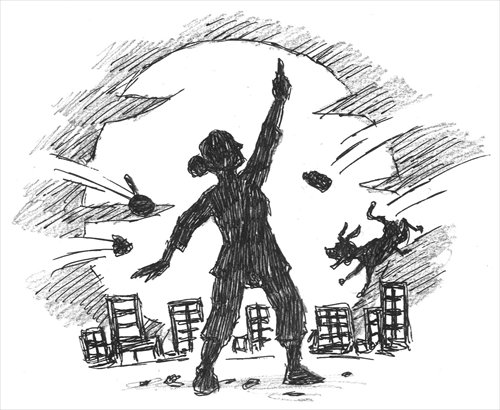Instructions shouldn’t destroy vitality of dancing grannies

Illustration: Peter C. Espina/GT
The elderly ladies in China get excited in the spring as they can resume their public dancing (guangchangwu, literally "public square dance") that has been halted by chilly winter days. But apart from warming weather, they are also greeted by new measures of the authorities to regulate the widely practiced but controversial exercise.
The General Administration of Sport and Ministry of Culture will introduce 12 public dances choreographed by an expert panel to local fitness sites in 31 provinces and municipalities in the coming five months. Among the 12 dancing drills are hit online songs such as "Little Apple," which was even performed on this year's Spring Festival Gala by China Central Television.
In recent years, it has become common to see elderly women dance passionately in the morning and evening both in cities and rural areas. The energetic dancers, known as dama, even took their enthusiasm for public dancing to the world when they performed on the Sunset Park in New York and in front of the Louvre in Paris.
The latest official move suggests that the authorities have paid high attention to the nationwide pastime, but it also sets off a debate.
Many netizens are concerned that this may dampen the creativity and vibrancy of public dancing and consequently there may be only unified and monotonous dances performed everywhere, reminiscent of the chants and marches that many of the dama went through in their youth.
In fact, the well-intended dancing drills are not necessarily a bad thing.
The public dances are often choreographed by the performers themselves, some of whom are not professional and know little about exercise science. Their self-choreographed steps may look stylish, but sometimes fail to help utilize the necessary body parts and reach the goal of enhancing health. They may even risk causing harm such as sprains to the elderly dancers.
Since the 12 public dancing drills were choreographed by experienced dancers and fitness trainers, they can certainly serve as guidance for local dancers and enable them to benefit from such exercise as much as possible.
But the authorities have to be mindful of not going too far when introducing the drills nationwide. The square dancers should be encouraged to learn more options, but never required by administrative order. They have the freedom to choose dances they find enjoyable and fun. It would be very boring and unpleasant to see dancers in public squares all forced into the same performances across the country.
Moreover, controversies are frequently sparked by the public dancers as the music often blasts into late night, and the inconvenience resulting from massive gatherings in public spaces disrupts the quiet life of many local dwellers. Various complaints have hit the headlines from time to time, with local residents throwing water, directing hoses, or even unleashing dogs on the unfortunate dama.
This reveals governments' inadequate provision of public services and management and points out what they can do to visibly benefit local people. The majority in fact cares more about how to minimize the noise and inconvenience caused by the public dancing than in what ways these dancers perform.
There is a sharp conflict between people's growing demand for exercise and the limited space available. The per capita sporting venue was reportedly only 1.46 square meters in 2013.
While offering helpful guidance and more options for public dancers, the authorities should also put some thought into making the public dancing less controversial and more popular with the neighbors.
The author is a reporter with the Global Times. sunxiaobo@globaltimes.com.cn